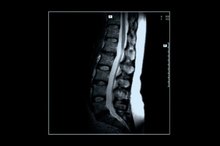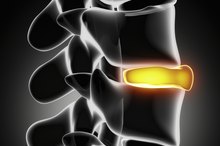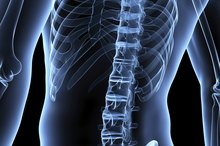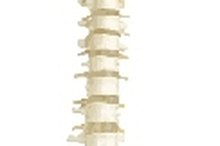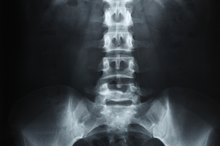Cervical Traction Contraindications
Cervical traction is a therapeutic tool used to pull or separate the vertebrae in the spine. According to "Therapeutic Exercise: Foundations and Techniques," by Carolyn Kisner and Lynn Allen Colby, cervical traction can help flatten and relieve disc bulges, relax muscles, mobilize the vertebral facet joints and reduce pain 1. Though cervical traction is used to treat a variety of conditions such as nerve pain from herniated discs, vertebral joint pain, muscle spasm and loss of spinal motion, care must be taken to avoid traction contraindications.
If you are experiencing serious medical symptoms, seek emergency treatment immediately.
Acute Cervical Injury
Traction is contraindicated with any acute injury process, explain Kisner and Colby. The mechanical force of traction can aggravate existing inflammation and any new strains or sprains of the cervical muscles and ligaments.
Osteomylelitis
Exercises for Adhesive Capsulitis of the Hip
Learn More
According to "Rehabilitation of Sports Injuries: Scientific Basis," edited by Walter R. Frontera, cervical traction should not be used when osteomyelitis or bone infection, is present 2. Putting pressure on infected vertebrae may cause the infection to spread or the vertebrae to weaken and fracture.
Spinal Instability
The Canadian Chiropractic Association lists instability of the cervical spine as a contraindication for cervical traction. This includes both bony instability such as severe osteoporosis and unhealed or acute vertebral fractures, and ligamentous instability.
Spinal Hypermobility
Complications of Lumbar Fusion Surgery
Learn More
Cervical traction should not be applied if excessive joint motion, or hypermobility, already exists in the cervical spine, explain Kisner and Colby. Applying a stretch force to vertebrae that are prone to moving too much could lead to an injury.
Tumors
Cervical traction should not be attempted if there are known tumors in the neck area. The force could disrupt the tumor and cause damage to the spinal cord, or cause a metastatic tumor to spread to other parts of the body.
Rheumatoid Arthritis
According to Kisner and Colby, cervical traction should not be performed if the patient has rheumatoid arthritis affecting the spine. This autoimmune form of arthritis can cause the ligaments supporting the cervical vertebrae to weaken and die, which might lead to a dislocation of the cervical spine and spinal cord injury when traction forces are applied.
Related Articles
References
- "Therapeutic Exercise: Foundations and Techniques," by Carolyn Kisner and Lynn Allen Colby; 2002
- "Rehabilitation of Sports Injuries: Scientific Basis;" Walter R. Frontera, ed; 2003
- ScienceDirect. Cervical Traction: Physical Modalities.
- U.S. National Library of Medicine, StatPearls. Cervical Traction. Updated September 10, 2019.
- Yang JD, Tam KW, Huang TW, Huang SW, Liou TH, Chen HC. Intermittent Cervical Traction for Treating Neck Pain: A Meta-analysis of Randomized Controlled Trials. Spine (Phila Pa 1976). 2017;42(13):959–965. doi:10.1097/BRS.0000000000001948
- Garg P. Home Care Neck Traction for a Patient With Neck Pain and Cervical Radiculopathy Symptoms: A Case Report. J Chiropr Med. 2019;18(2):127–130. doi:10.1016/j.jcm.2018.11.006

